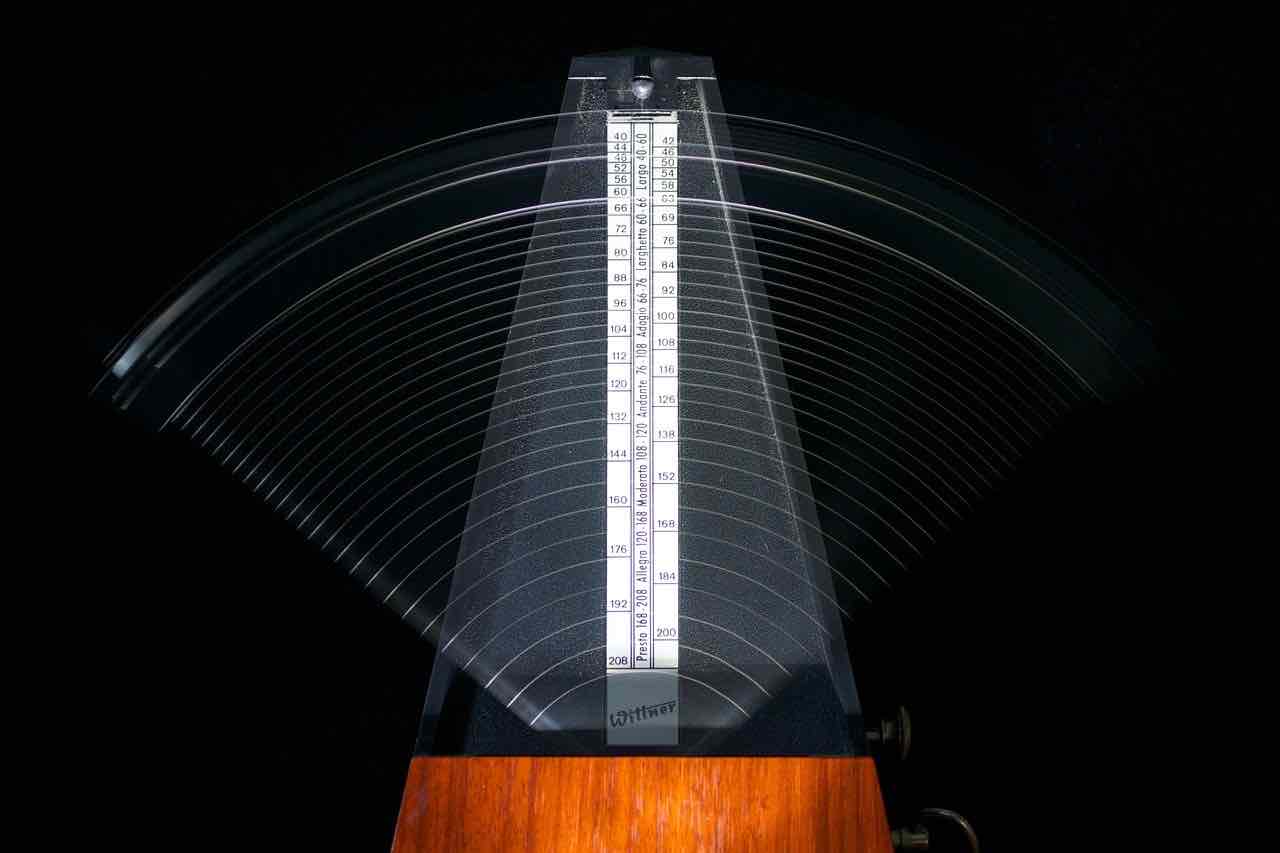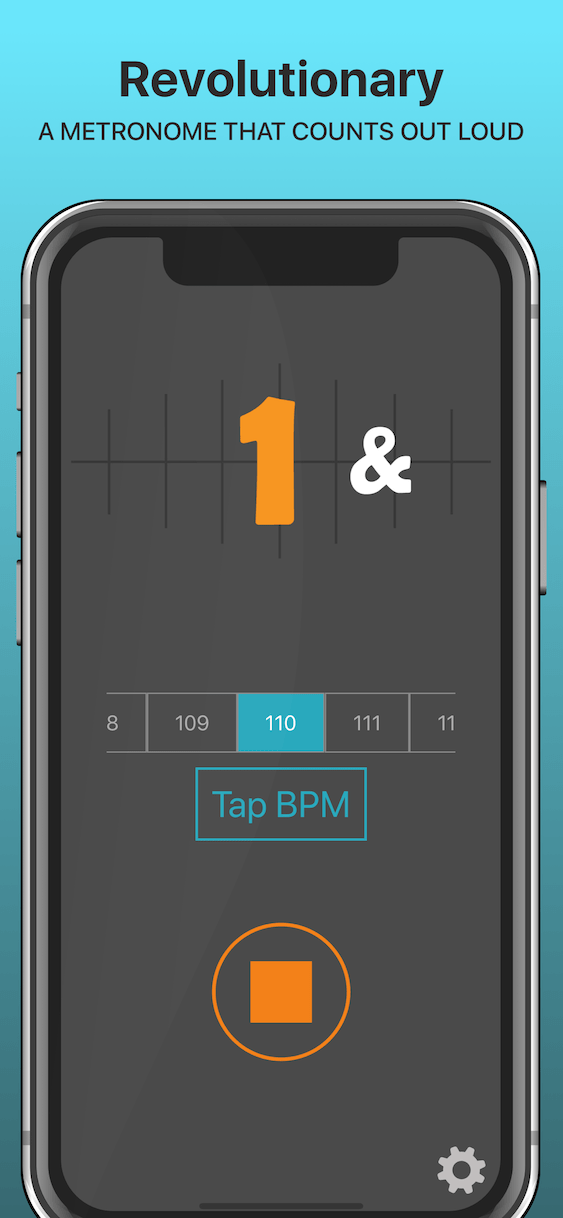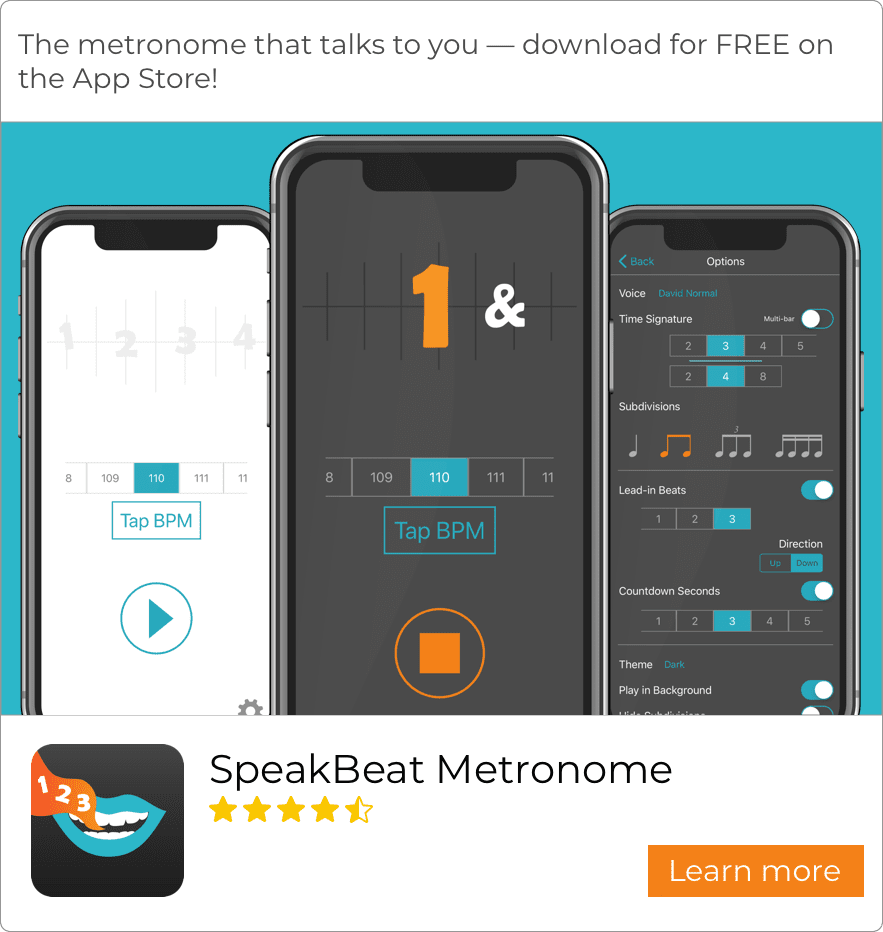What are metronomes?
A metronome is a musical device which produces a click, or some other sound, at a regular interval (called the "tempo"). This tempo is chosen by the user and is measured in beats per minute (BPM). Musicians commonly use metronomes to help practice rhythms and to learn how to maintain consistency in the speed at which they sing or play music. Metronome use is common when practicing piano, guitar, and other instruments.

The steady, rhythmic beat of a metronome can be a significant help to amateur and professional musicians alike. When used as a regular part of practice, a metronome can help a musician internalize a clear sense of timing and tempo and overall improve their performance ability. Some metronomes also include a synchronized visual aid, such as a flashing light, in tandem with the tick. Special metronome apps, such as SpeakBeat Metronome for iPhone and iPad, even counts out loud for you using a human voice!
Composers also metronomes as a standard tempo reference. They will often include tempo markings in the sheet music, either as precise BPM numbers or general terms like "largo" or "very slow." These tempo markings indicate the speed at which musicians should perform their work.
When interpreting emotion and other qualities in music, performers seldom play exactly on time, often preferring to stretch or compress the time. In this case, a musically expressive performance hardly ever aligns exactly with each click of a metronome.
Types of metronomes
There are many types of metronomes out there, ranging from small physical devices to convenient software solutions on your mobile device.
Mechanical:
Mechanical metronomes use adjustable weights on the end of an inverted pendulum rod to control tempo. A musician slides the weight down the pendulum rod to increase the tempo, or slides the wight up to decrease the tempo.
Electronic:
Most modern metronomes are electronic and use a quartz crystal to maintain timing accuracy. The simplest electronic metronomes have either a dial or buttons to control the tempo. Some are also able to produce a tone which can help musicians tune their instruments. This tuning note is usually around the range of 440 Hertz (known as "A4", the musical note A above middle C).
Some of the more sophisticated electronic metronomes can produce sounds more sophisticated than a simple click for each beat. To help the user separate downbeats from other beats, such metronomes can differ the downbeat's sound in volume, timbre, and pitch. As well, these metronomes can also be used to help musicians separate compound and complex time signatures.
Software:
Compared to mechanical and electronic metronomes, software metronomes are becoming much more popular and widespread. They have all the features of an electronic metronome built right into an app on your mobile device.
The convenience and portability of having a metronome app on your phone makes software metronomes highly adaptable to a diverse range of activities. Not only can they help musicians keep time, but metronomes can help people with their fitness training, dance routines, cheerleading practice, or even breathing exercises. Anyone who needs help adhering themselves, their students, or their clients to a specific strict rhythm can easily find and download a free metronome app from Apple's App Store or Google's Play Store.

The SpeakBeat Metronome App
There are many software metronomes available today, but SpeakBeat Metronome, free on the App Store, has a unique advantage over other metronomes. In addition to the common click track, SpeakBeat Metronome can count out loud for you using a human voice. Choose from a wide range of voices, both serious and fun, and let the metronome keep track of each beat for you. The human voice counter can serve both as timekeeper and motivator, especially for something like a strenuous exercise routine.
Just looking for a simple online metronome? Check out our Free Online Metronome.

